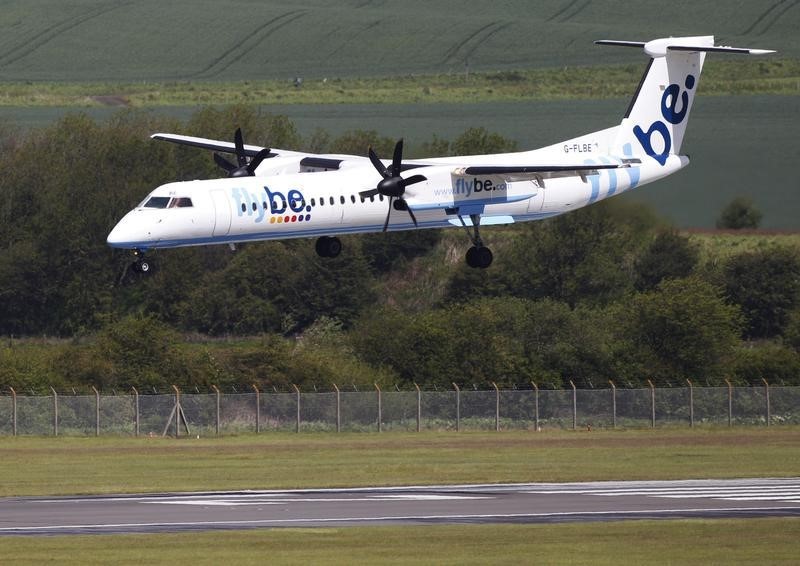LONDON (Reuters) - British regional airline Flybe Group was upbeat ahead of the traditionally slacker winter travel period after its turnaround plan returned it to profit in the first half.
Flybe, whose routes connect UK regional cities to each other as well as European destinations, has over the last two years cut staff numbers and wages, sold airport slots and exited unprofitable routes, as part of a plan aiming for sustainable annual profit growth.
"In terms of our outlook going forward, we're optimistic, but cautiously so in the next half," chief executive Saad Hammad said in a telephone interview on Wednesday.
European airlines tend to make the bulk of their profits in the summer months when more people take flights to go on holiday, while the winter half-year period is often loss-making.
For the six months ended Sept. 30, Flybe reported pretax profit of 22.9 million pounds ($34.70 million) compared to a 3.3 million pound loss in the same period last year, after it added new capacity and cut costs on surplus aircrafts and marketing.
Analysts at Cantor Fitzgerald, who have a "hold" rating on the stock, said they believed Flybe remained in transition and stuck to their forecast for full-year adjusted pretax profit of 5.2 million pounds.
Shares in the airline, which have gained about 60 percent in the last six months, were down 0.5 percent to 89 pence at 1118 GMT, paring earlier gains of as much as 5 percent.
In its first-half, the airline also benefited from an improved pricing system and more digital marketing, plus the lower cost of oil, although up to 90 percent of Flybe's fuel needs are hedged. It expects to receive a real boost in its next financial year when those hedges expire.
The lower fuel price - the price of crude has more than halved since June last year - is creating a more competitive environment for all airlines and Europe's biggest low-cost airline Ryanair has warned of a fare war.
Given its regional routes, Flybe's competitor on two thirds of its routes was road and rail, rather than airlines, said Hammad, adding that the airline was mindful of the competitive environment and planned to grow capacity 13 percent in the second-half.

"We're focusing it very much on frequency enhancements to our existing routes rather than launching new routes," Hammad said.